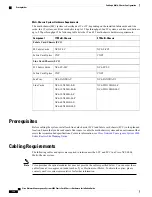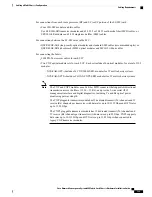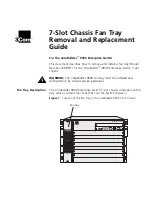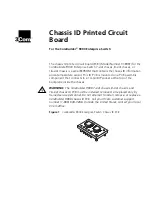
•
Cable Director (P/N 2123610-1), to provide support and strain relief for fabric cable connections (provided
by Cisco approved vendor Tyco Electronics)
•
Supply of Velcro tie wraps (to bundle cables)
•
Ladder
Cabling Overview
Cable Routing Considerations
Cabling Routing
Whether the cables will be run overhead or under the floor, consider the airflow and cable characteristics of
the combined cable sets to ensure that your cable management structures support the total capacity of cables
for the Cisco NCS 6000 Multi-Chassis system installation.
Raised Floor Installations
To plan cable routing in an installation with a raised floor, consider all the characteristics of each cable required
for the installation. Allow slack for cabling so that cables can be pooled under the floor for future expansion
without exceeding bend radius or cable length limitations. Riser cables are not rated for installation in air
plenum passages, nor are they designed for use in LSZH (low smoke zero halogen) applications.
Cable Characteristics
Plan your cable runs, consider the characteristics of each cable, such as the cable length limitations, combined
diameter of bundled cables (such as power cables), weight of the cable groups, and bend radius of the cable
or cables. Couple these considerations with the cable infrastructure available (or needed) at your facility. The
infrastructure could include structures like the overhead cabling monorail or J-hook system, sleeve and riser
diameters, and distances between floors or elements of the Cisco NCS 6000 Multi-Chassis system.
Analyze the cabling infrastructures, risers, and racking available in your facility to determine if the capacity
of the cabling management systems at your facility will accommodate the required capacities of the multi-chassis
system cabling.
Cable Length
The limit of the cables is 100 meters (328 feet). Consider this distance when planning the physical locations
of the LCCs and FCCs. For more information on the range of lengths available for the OM4 fabric cables,
contact a Cisco approved vendor such as Tyco Electronics or Molex.
Cable Bend Radius
Exceeding the bend radius allowed for a cable can break the glass in the cable or cause attenuation or loss of
signal. Do not bend a cable more than the allowable bend radius.
See the
Cisco Network Convergence System 6000 Series Routers Site Planning Guide
for information on
planning component locations and cable runs.
Cisco Network Convergence System 6000 Fabric Card Chassis Hardware Installation Guide
143
Cabling a Multi-Chassis Configuration
Cabling Overview







































